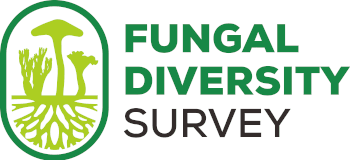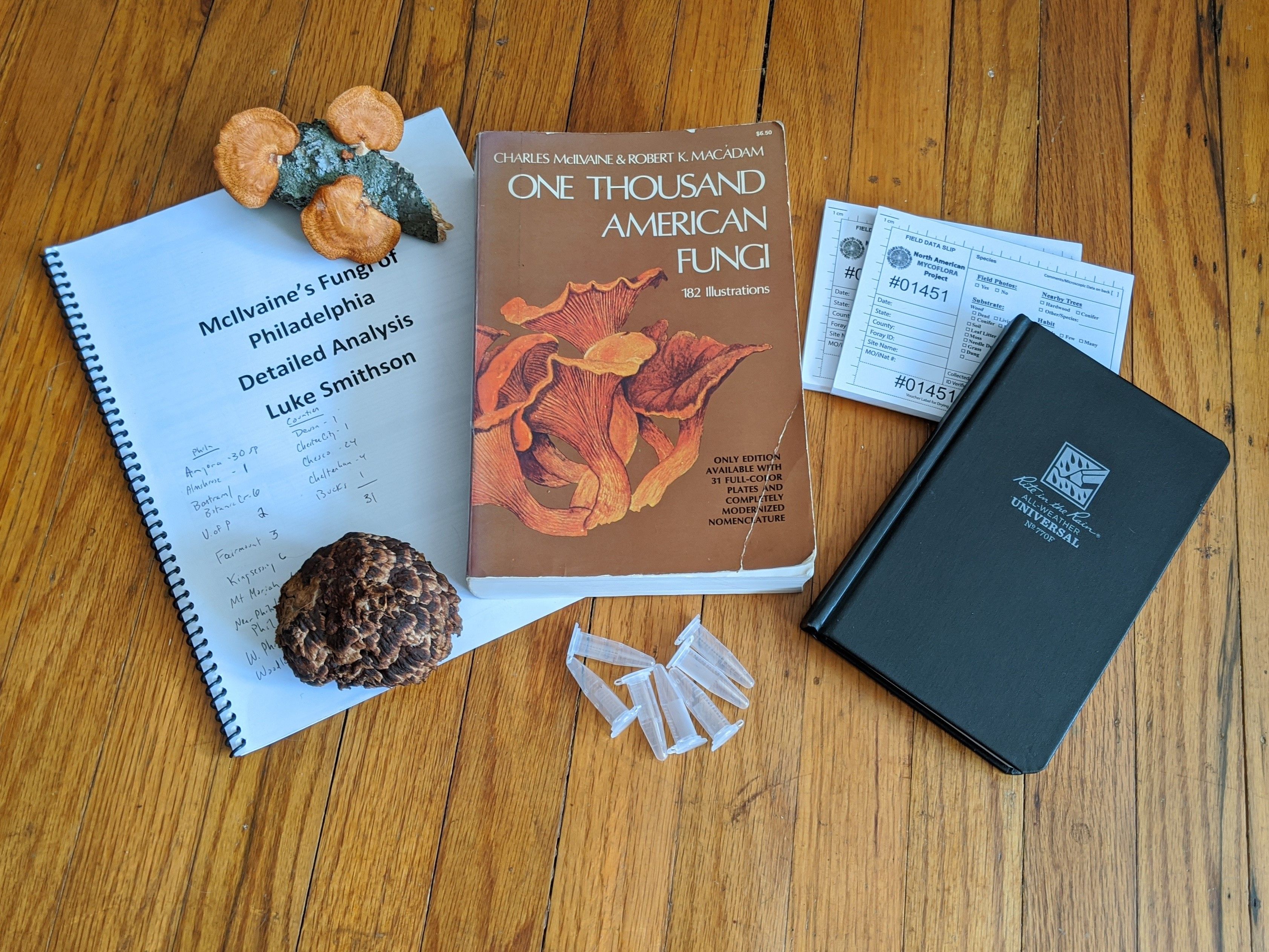There is a question that I often consider as I hike: how much has the mycoflora of Philadelphia changed in the past century? That can be a hard question to answer, as historical fungal records of the region are sparse.
But a conversation with dearly departed Gary Lincoff led me to the discovery of one source of record keeping in the book “One Thousand American Fungi”, by Philadelphia residents Charles McIlvaine and Robert K. MaCadam. Published in 1900, it was one of the first comprehensive field guides of North American mushrooms. McIlvaine is considered to be the primary author of this book. In this book, the authors note the specific collecting location of many of the fungi described. Some of the locations are vague (Oak woods surrounding Philadelphia), others are quite specific (rear of Independence Hall or Woodland Cemetery). In Philadelphia itself, 94 species are noted with locations. In the surrounding 4 PA counties, an additional 31 species are noted. They also note many species found directly across the Delaware River in the nearby NJ counties as well as other parts of Pennsylvania.

The landscape where the authors collected their mushrooms have changed considerably in the past 120 years. What was once wooded countryside surrounding Philadelphia is now completely urbanized. But there are still pockets of green in these regions. I intend to visit these Philadelphia locations over the course of several collecting seasons and try to find the fungi that they were finding in these locations. Additionally, I will consider other green areas in Philadelphia as sanctuaries where these fungi may continue to thrive. As I find specimens, I will collect, voucher and submit the specimens to the Academy of Natural Sciences in Philadelphia as part of a regional project within the North American Mycoflora Project.

My initial hypothesis is that there will be a number of fungi that the authors noted in our region that will be difficult or impossible to locate, particularly the ectomycorrhizal species that are very host specific. It will be important to consider the changes in the tree populations within the city over the past 120 years.
This project will be completed in a series of seasonal steps:
Winter 2019/2020
- Determining what mushrooms we are looking for: I have spent this past winter creating a spreadsheet with all of the Philadelphia and surrounding PA county mushrooms noted in the book. I then dove into the myco literature and updated the names with the current nomenclature. I had to determine whether the authors were using American names or European names, and if they were still using European names I attempted to determine if American counterparts exist.
- Cross reference this list with regional herbarium collections. Approximately 60 McIlvaine collections exist in herbaria in the region, per Index Fungorum. At a quick glance, there are at least a few vouchered specimens that are mentioned in the book. At least one species that McIlvaine collected in Philadelphia is a holotype describe by Charles Peck.
- Check present mycomaps, such as Mushroom Observer and INaturalist, to see if the target mushrooms have been observed in the Philadelphia region in recent times. An interesting distribution pattern is often seen on Mushroom Observer where the mushroom I am searching appears in a regional ring around Philadelphia, occurring in the more wooded regions of southern New Jersey, Northeastern PA and Central PA but absent in the Philadelphia region. This supports my initial hypothesis that many of the mushrooms that McIlvaine collected no longer exist in Philadelphia. Of course, this could also mean that there are not that many Philadelphia MO users. INaturalist seems to be more popular among Philadelphia users, but even considering this I still do not see many of McIlvaine’s mushrooms present on this mycomap.

- Map out the authors collecting locations and determine what state they are in. Many of the 94 mushrooms specifically noted in Philadelphia were observed in West Philadelphia. This region of the city has very little in the way of green space left but we do still have Cobbs Creek Park, Bartrams Garden and several large cemeteries. While the plant life in these spaces are likely very different than they were 120 years ago, there are still large trees that support ectomycorrhizal species present in small quantities, specifically Quercus, Fagus and Pinus. Other parts of Philadelphia have larger wooded parks and should be visited. The surrounding counties are not quite as urbanized, but in recent decades open woodland has become sparse in these suburbs as sprawl and development has advanced.
Collecting Seasons 2020 and 2021
- The Philadelphia Mycology Club will visit these sites over a two year period, specifically looking for fungi listed in the book and making collections using the NAMP protocols. We will document the amount of time spent in the field so that we can attribute set amounts of person hours that have been spent trying to find a specific mushroom. At the end of these collecting seasons, we will decide as to whether enough time in the field has elapsed to make conclusions or whether more time is required. Factors such as member turnout, weather and access will affect the level of success during these collecting seasons.

Winter 2020 and 2021
- Evaluate our results. Factors such as funding will determine how deeply we can dive into sequencing the fungi, but initial inquiries leave me confident that funding can be secured for this work. If results are yielded, an expansion into the New Jersey counties and other PA regions may be warranted.
This type of research will help us understand our current impact on our ecosystems and document recent changes in the region. It will also give future researchers more data to analyze the ever-continuing impact that we have on our living spaces. Every McIlvaine mushroom that we find in Philly be a victory for the fungi!






Comments
For me one of the most important specific data points about the changing mushroom world is the forest type. In the PNW our old growth forest and its huge diversity has been replaced by second (or third) growth working forest that are often single species wood lots. While the question of the wisdom of creating single species working forest is maybe questionable, what isn't questionable is the different fungi words found in each forest habitat type. Some species of course can be found in both - others not. What diversity have we lost forever?
If we were to design our own MP cards (which of course we could if we had the ambition to do so) I would put a clear distinction between old growth forest and managed forest.